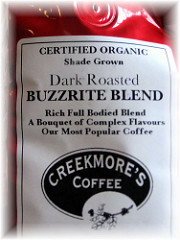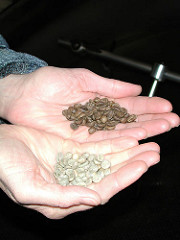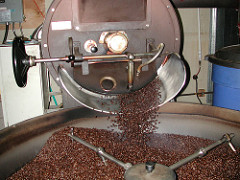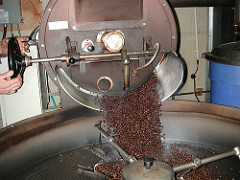Carmen Estate coffee
Related entries in Coffee around the world, Coffee Education, Coffee Experiences, Coffee ReviewsWe tried another Panama coffee, this time from the Carmen Estate and also from the Best of Panama auction lot. Our beans were roasted by Hines, and thankfully provided by Elysian Room.
Carmen Estate is located in the Paso Ancho region, above the Finca La Florentina. From Sweet Maria's:
Carmen is on a very steep hillside with southern exposure, and due to the high altitude, the coffee has greater density, better acidity, a more piquant cup. So in a way, Florentina was getting some better cup quality with Carmen in the mix. But the farm was passed down to the new generation of the Franceschi family, namely Carlos Franceschi (Carmen was his grandmother) ... and he realized that they had a better coffee on their family farm then something to blend with lower-grown coffees. He built an independant mill for the Estate down in the valley using the latest equipment, and began a program to care for the trees usign new techniques. This farm uses the de-muscilage process where the muscilage is stripped off the parchment layer using friction, rather than traditional fermentation...
This coffee won the #3 spot in the Best of Panama competition in 2003, 2004 and #2 in 2005. The entire farm is very high altitude; it starts at 1450, an altitude many farms don't even reach, meters and goes up from there! We have a special arrangement to buy the coffee each year from the 1700+ meter altitudes, a very small amount of coffee. We sold out of that lot rapidly this year, but the entire crop is so good (a testament to Carlos' innovations) we set aside this Estate lot from his later shipment to the US, based on sample approval once it got here.
I preferred the brightness of this coffee over the more floral taste of the other Panama we tried. That's just a personal taste, as each has really bold flavours, but in different ways. I want to say this one was more sweet, although I know that was not the right word.
It was really a treat to drink it and to compare the differences, which were obvious right of the bat and in the finish, between the two Panama coffees.










